Throwback Thursday: The Meteors You’ve Been Waiting For
Look up after sunset for the most reliable meteor shower of the year: the Perseids, and learn where they come from!
Image credit: Michael Menefee (Fort Photo on flickr), via https://www.flickr.com/photos/fortphoto/7823333570/in/set-72157634989518344.
“That’s why I enjoy taking myself out of my own element, my own comfort zone, and hurling myself out into the unknown. Because it’s during those scary moments, those unsure steps taken, that I am able to see that I’m like a comet hitting a new atmosphere: suddenly I illuminate magnificently and fire dusts begin to fall off of me… I’m a shooting star. A meteor shower. But I’m not going to die out. I guess I’m more like a comet then. I’m just going to keep on coming back.” –C. JoyBell C.
Here in the Solar System, meteor showers are one of the things we take for granted on Earth. In particular, the Perseids is just starting to peak now, reaching its maximum on August 11th-12th, and remaining worth looking up for until about the 16th or so. The most reliable shower year after year, it causes spectacular streaks of light to illuminate the night sky. Over a period of many hours, it’s not uncommon for hundreds of meteors to delight skywatchers on a moonless night.
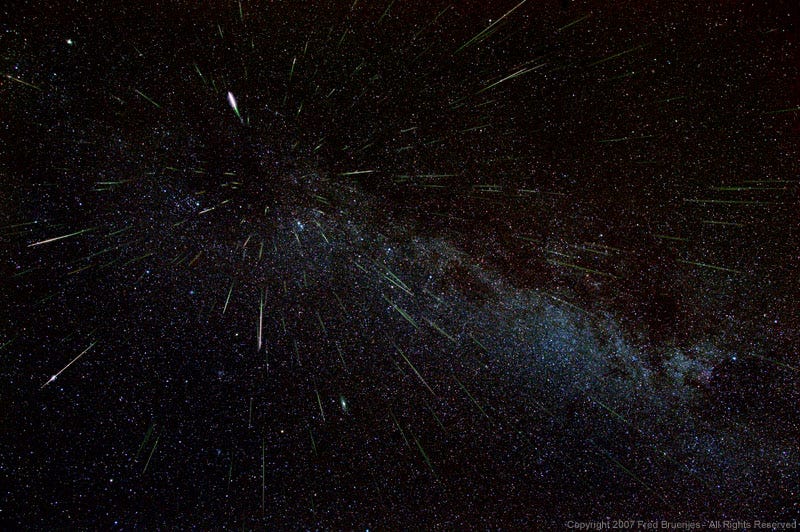
If you want to enjoy them, where should you look? Although the simplest answer is “up,” meteors in any given shower all originate from a single point in the sky, streaking out omnidirectionally from that location, called a radiant. Where can you find the radiant of the Perseids?
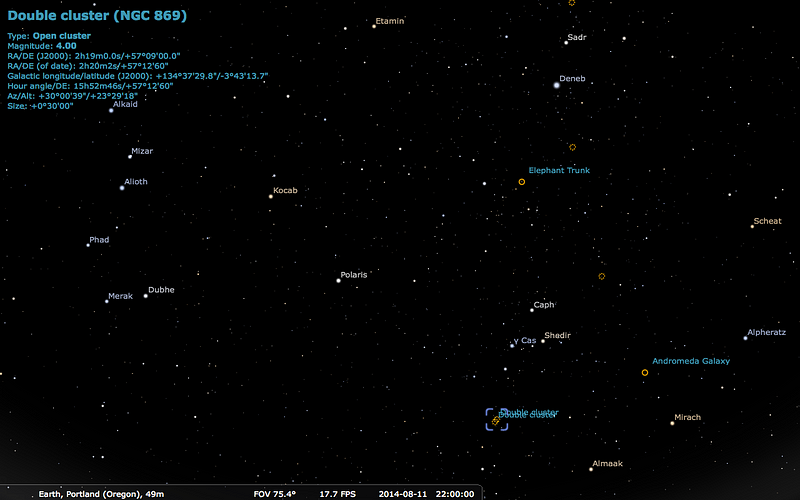
Almost everyone in the Northern Hemisphere can recognize the Big Dipper (at left on this image), the North Star (Polaris), and Cassiopeia (the big “W” towards the right), all of which are visible in the north throughout the night.
Just beneath the first V in Cassiopeia’s W is the famous Double Cluster in Perseus, one of the most spectacular collections of hot, young stars in the nearby Universe.
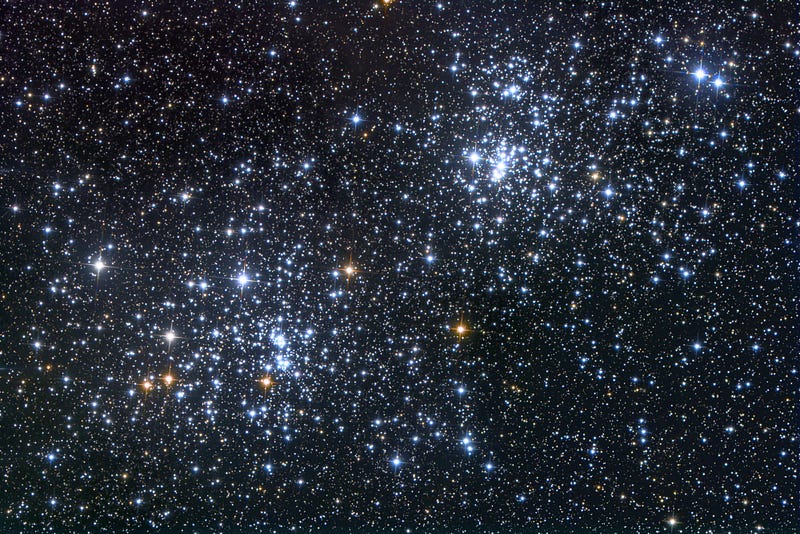
Although it’s visible to the naked eye under very dark skies, it’s most spectacular through telescopes or very good binoculars. But it isn’t the Double Cluster itself that’s important for meteors, and in fact you’ll be best off leaving your binoculars and telescope at home. Instead, it’s a location near the Double Cluster in our night sky that we should focus on.
A single point in the sky — just below the famed “W” in the constellation of Cassiopeia – is where all the Perseid meteors seem to emanate from. Although this one particular point is unique to the Perseids…
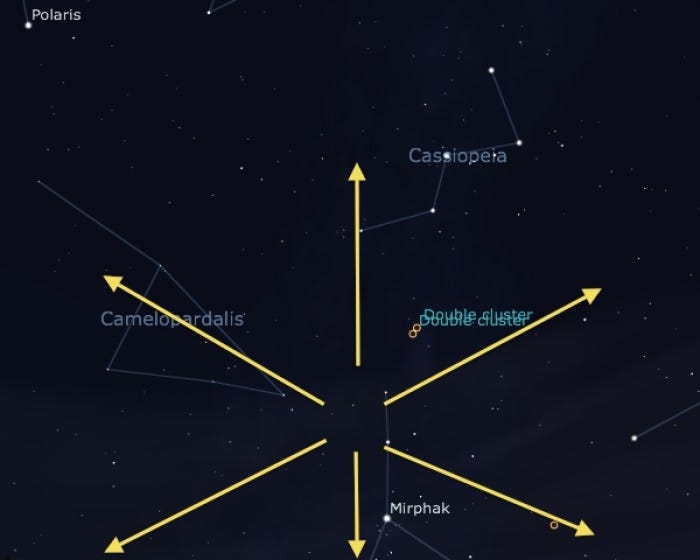
…each meteor shower of the year has its own unique point-of-origin, and it corresponds to the location on the sky where the Earth plows into a cometary (or asteroid’s) debris stream.
Often called shooting stars or falling stars, these bright flashes of light aren’t stars at all. Rather, a small piece of space debris — usually a minuscule rock known as a meteoroid — smacks into the Earth’s atmosphere at a fantastic speed, somewhere in excess of 20,000 meters-per-second, or around 40,000 mph.
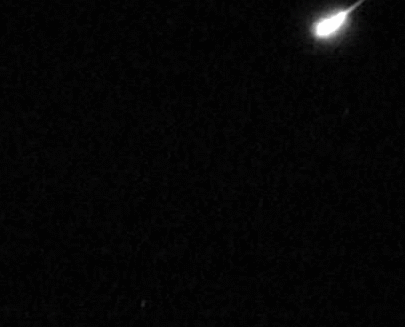
When we think of rocks in space, we normally think of giant asteroids, capable of leaving humongous craters on Earth, or even doing something catastrophic, like wiping out the dinosaurs.
But when it comes to meteor showers, nothing could be further from the truth. The only thing meteor showers have in common with asteroids is that they’re only created when asteroids or comets — ice-and-rock rich bodies from the Solar System far beyond Earth — venture into our neck of the woods!
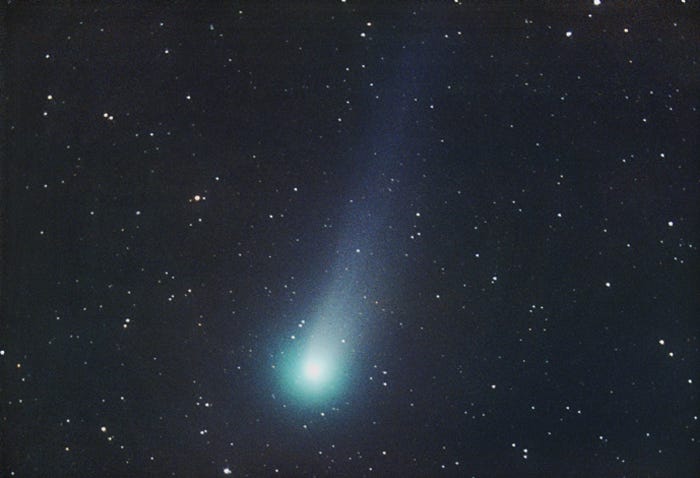
In the case of the Perseids, it’s Comet Swift-Tuttle, a periodic comet that swings by every 133 years, that’s the culprit. When a comet (or asteroid) swings too close to the Sun, the radiation from the Sun causes some of the ices to melt, creating the spectacular and characteristic comet tails that have delighted skywatchers since the dawn of humanity.

In fact, you might think that these tails would leave a “ring” of debris after enough passes, something that perhaps the Earth would pass through, creating these meteor showers.
If that’s what you think, you’re partially right. Comets (and asteroids) that swing close by the Sun do develop tails, they do leave rings of debris scattered along their orbital path, and when the Earth passes through that debris, that is, in fact, what creates meteor showers.
So you got that part right.
And if you take the right astronomy photo at the right time, you just might happen to find a Perseid streaking by the Andromeda galaxy, which lies very close to the origin point of the Perseids in our night sky.

The vast majority of the shooting stars you see during a meteor shower aren’t from boulders, or even rocks. Are you thinking more like a pebble? Still way too big. What if you tried going down to a grain-of-sand? That’s more like it! These great fireballs that often streak for hundreds of miles across the sky? They come from meteoroids about four millimeters in diameter. (And larger, but the majority of the ones we see are that small.)
That’s right, each streak of light that happens during a meteor shower comes from about 100 milligrams worth of material striking the atmosphere. Think that’s too little to produce the spectacular light show that a meteor produces, visible as a bright streak from 100 kilometers away? Remember, the energy that something has might be directly proportional to its mass, but it’s also proportional to its velocity squared. A few milligrams might be a tiny, tiny amount for a mass, but 40,000+ mph squared more than makes up for it!
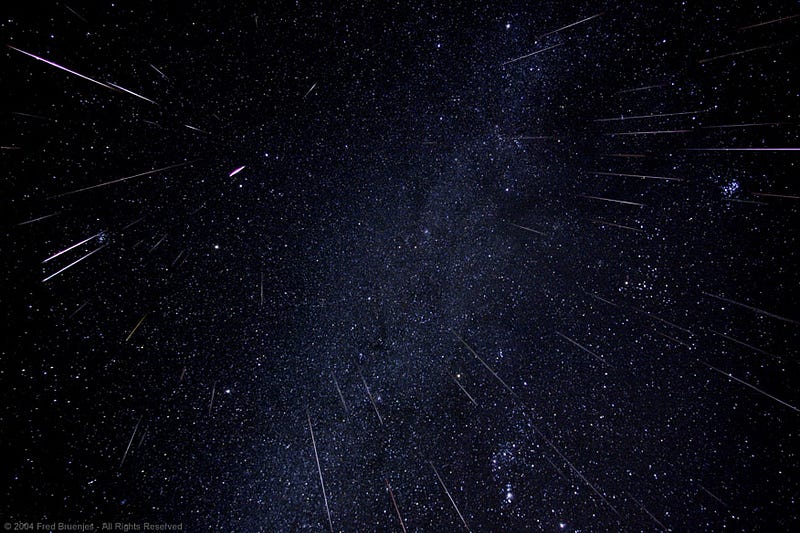
These meteors all have their origin from space, at the top of Earth’s atmosphere. Believe it or not, we’ve actually photographed them from space itself!
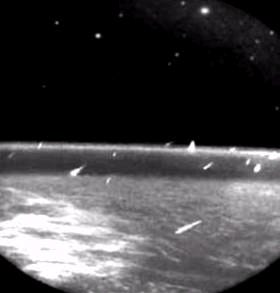
But there was a part you got wrong if you thought that comets passing through the inner Solar System, growing tails and having that debris be responsible for the origin of these meteors. As it turns out, the comet’s tails don’t have anything at all to do with the meteor showers you see.
Yes, that’s right: not tail, but tails. In fact, comets can have — from our point of view — up to three tails!
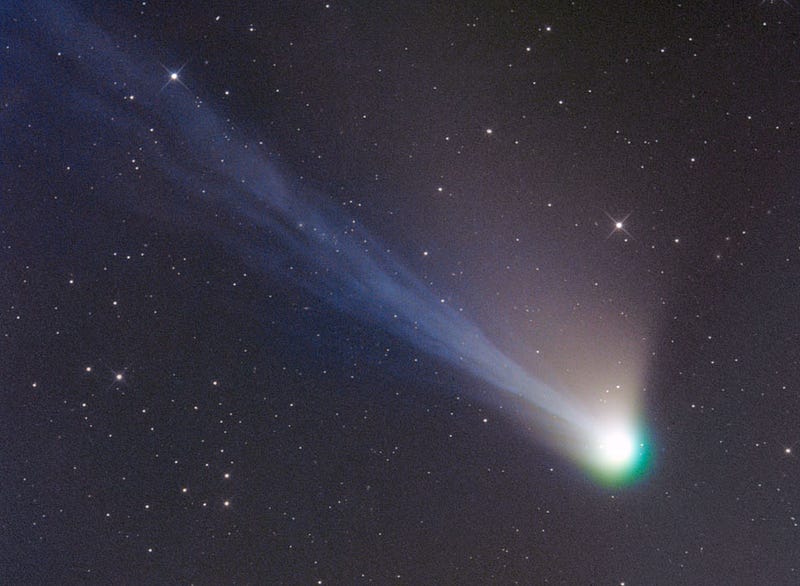
There’s the ion tail, which you can see in blue. This tail always points directly away from the Sun, and is made of ionized gas. Because it’s ionized, it’s strongly affected by the Solar Wind (a stream of electrically charged particles), and also by the Sun’s magnetic field. It’s called the ion tail because the light it emits is due to its ionization, and that’s also why it appears blue.
Additionally, there’s the dust tail, which is more diffuse and appears white, above. Shining in reflected sunlight (which explains its white color), this tail is, in fact, made up of tiny micrometeoroids. If these particles collided with Earth, they would produce meteors. But unfortunately, the dust tail doesn’t leave a trail in the orbit of the comet, but rather in a curved path away from its elliptical orbit!

There’s also, sometimes, an antitail, which looks like it trails behind the comet as seen from Earth. Above, you can see Comet Lulin, with its dust tail to the right and its antitail to the left.
Could this be the culprit in creating our meteor showers?
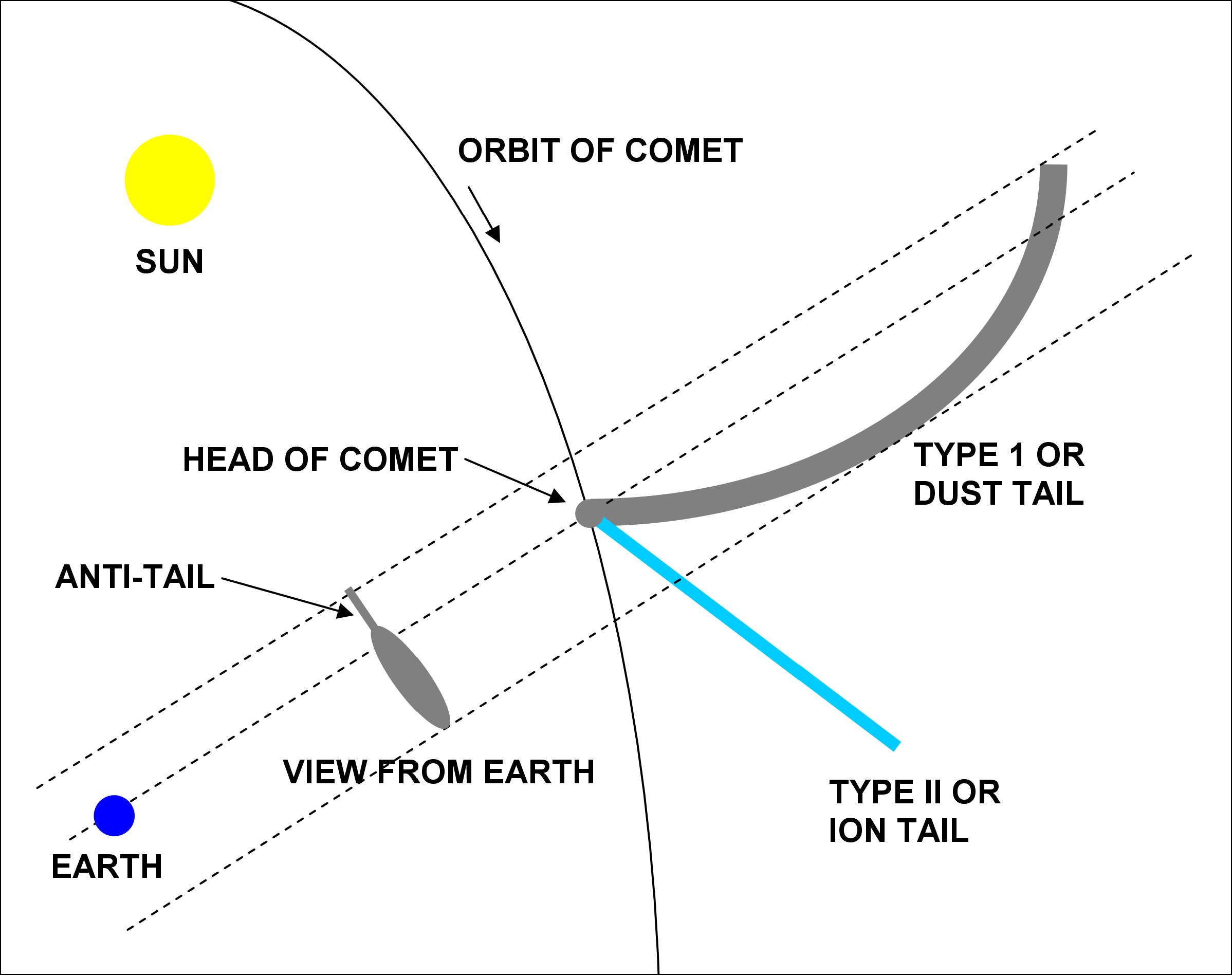
Not quite. This is just a trick of perspective: as a comet moves away from the Sun, its curved dust tail suddenly seems to lag behind the comet, creating an anti-tail from our point of view. In reality, this antitail is even farther out in the orbit than the normal tail of the comet.
Yet meteor showers occur when the Earth passes through the orbital path of the comet itself! It’s none of these three tails that explain where our meteor showers come from. The tails all result in particles that orbit the Sun in a much more diffuse arrangement, and that aren’t concentrated in a ring along the comet’s orbital path.
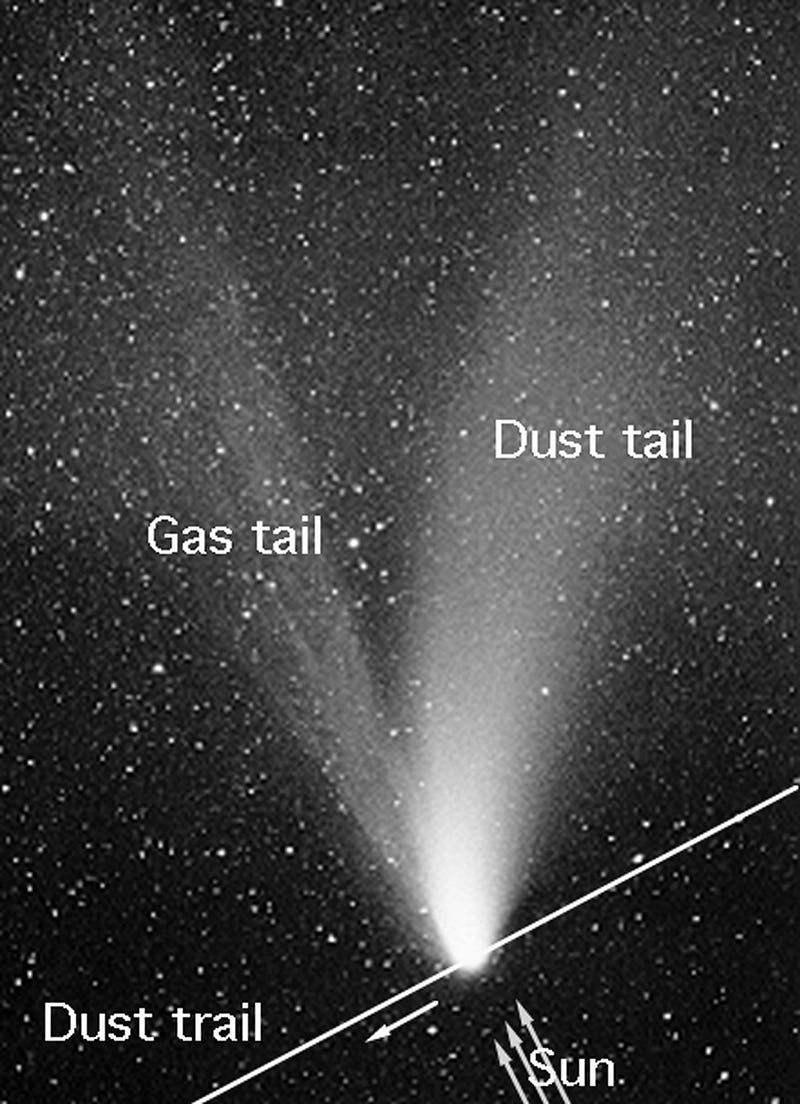
Instead, you have to remember that comets and asteroids are composed of large amounts of ice. When comets (or asteroids) either pass too close to a massive body (like the Sun) or get too hot (also caused by the Sun), they tend to break up.
It might only be by a little bit, it might just be a tiny chunk here-or-there that breaks off. But when that happens, there will be a slew of tiny particles that come off — some a little faster, some a little slower — that, over enough time and enough orbits, can create that ring of micrometeoroids we know must exist. We saw this “ring” strewn out from the image of Comet Encke earlier, and amazingly, we’ve been able to image these tiny particles in a comet’s path directly!
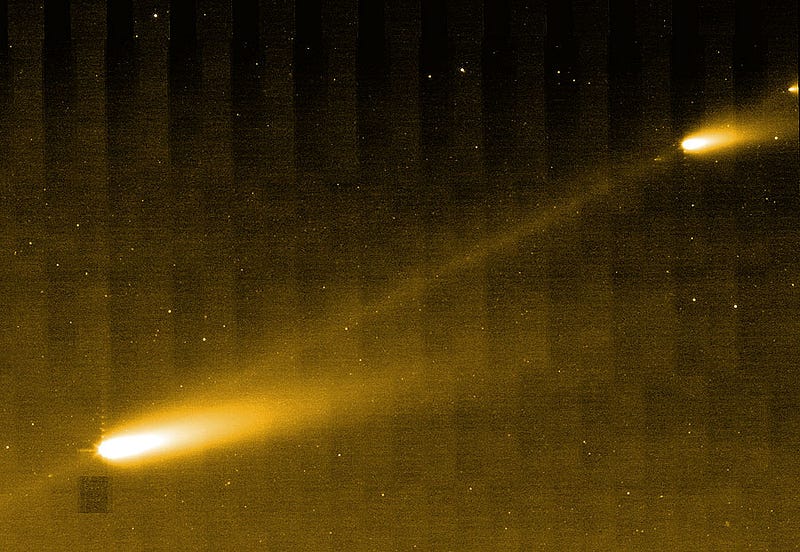
The Spitzer Space Telescope, ideal for viewing infrared dust, captures this line of debris that traces out a comet’s orbit beautifully! And whenever the Earth, hurtling furiously through space in its neverending race-around-the-Sun, passes through that trail of debris, that’s when we get a meteor shower!
Of course, we’re not even the only planet that gets one, check out this image, of the first meteor ever photographed on Mars, courtesy of the now-defunct Spirit rover!
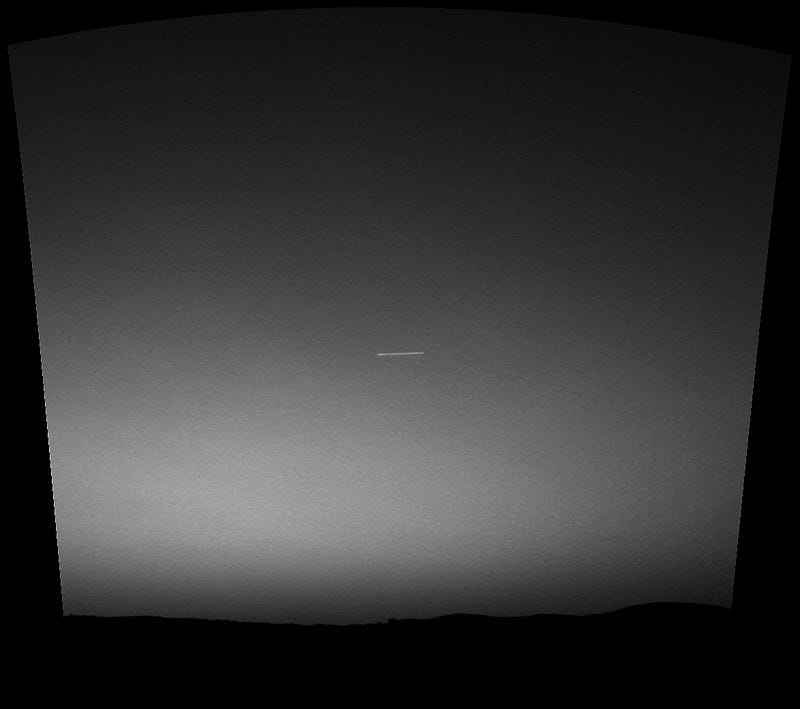
The best part? Pretty much every planet in every Solar System with even a thin atmosphere should have these!
And that’s where meteor showers come from, and where the Perseids come from in particular! The next time you see a shooting star — and I hope you get to see at least one over the next week — remember exactly what you’re looking at: comet dust from broken-apart fragments that have spread out millions of miles throughout space, no bigger than a few millimeters in size, colliding into our atmosphere at tens of thousands of miles-per-hour, just to deliver a momentary flash of light as they burn up! That’s what a meteor shower is, that’s where they come from, and that’s where to look — full Moon or not — to see the most reliable display of shooting stars year-after-year!
Enjoyed this? Leave your comments at the Starts With A Bang forum here!





